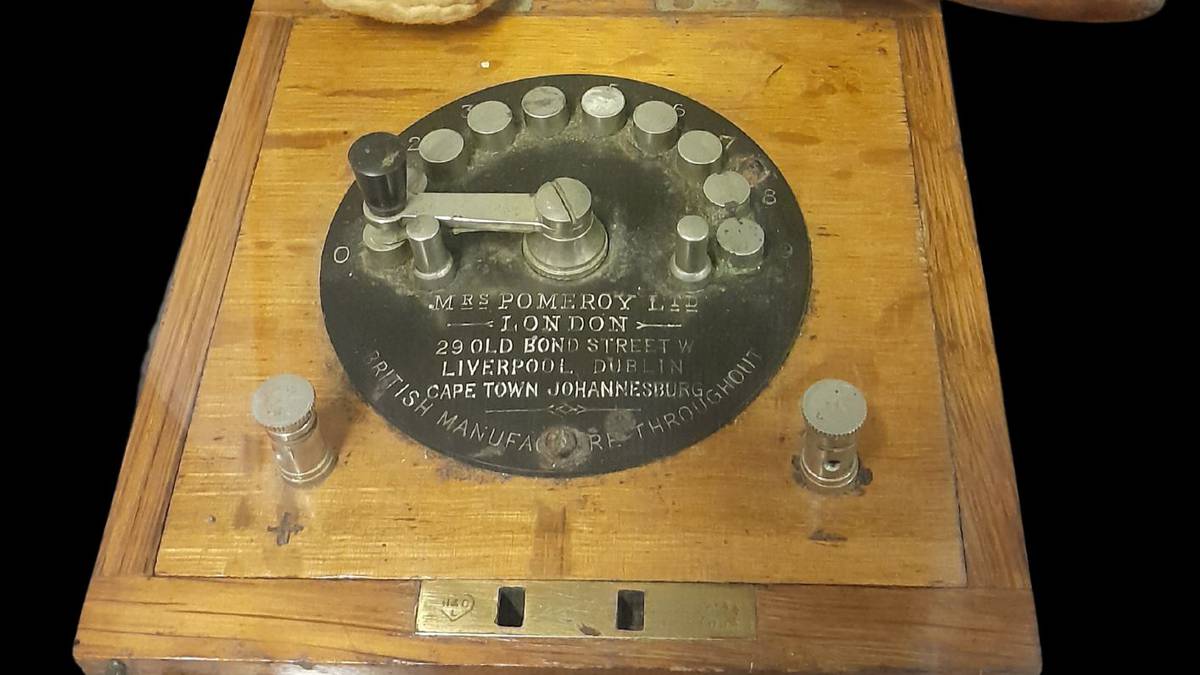This machine – Mrs Pomeroy’s Wrinkle Cure – was a portable electrical device that could be ordered through the post and used at home for stimulating the skin and muscles and preventing and removing wrinkles.
Opinion
I stopped by the Medical Museum in the Heritage Park at Kiwi North this week and was amazed by what I saw. Among the thousands of antique objects and equipment on display are four devices that caught my eye, all beautifully encased and presented, all extremely popular in the early 20th century, and all now considered to be medical quackery.
The purpose of these machines was once highly regarded, and even today they look impressive. They promised incredible things like being able to cure anything, from asthma to rheumatism, gout, weak lungs, nervousness, hysteria, and even wrinkles, baldness and greying hair. These machines all used electricity to treat patients, with some emitting a soothing purple light while delivering recuperative sparks to an affected area. These treatments were popular largely because they came at a time when electricity was exciting, new and not completely understood.
/cloudfront-ap-southeast-2.images.arcpublishing.com/nzme/VVWLHELP4BGGHBRDSZR6ELHCJQ.jpg)
Among the collections in the Medical Museum, promoted as being a “cure-all”, is a Fluvita Violet Wand and a Shelton Violet Ray. Violet ray therapy was developed from the discoveries and ideas of pioneering engineer Nikola Tesla. He suggested different wavelengths on the electromagnetic spectrum could be used to treat medical conditions. It did not take long before devices like these were being used to treat people’s ailments.
Advertisement
Many of these electrotherapeutical devices came with a selection of glass tubes of varying shapes and sizes. The tubes contained a gas such as argon that would react with an electrical input and result in an impressive purple glow. The shapes and sizes of the glass were intentional, as they were designed to fit all areas of the body needing treatment, both inside and out. There are some shaped like combs for problems relating to hair, flat ones for topical skin ailments, small tubular ones to fit inside the nose and slightly larger tubular ones for other internal cavities.
/cloudfront-ap-southeast-2.images.arcpublishing.com/nzme/7ZLMEYECVZCTRPRCNFIOQHWTXM.jpg)
Also on display among the medical quackery is an Overbeck Rejuvenator from 1925. This too uses electrical current to deliver treatment to affected areas, but not through glass tubes. Instead, it used pairs of electrodes, including body combs, to deliver a “scintillating buzz”, as promised by inventor Otto Overbeck. He claimed the electric current would “slowly restore your body’s youthful vigour”.
While some devices were promoted as being able to cure any ailment, others used the same technology for a more specific purpose. Mrs Pomeroy’s Wrinkle Cure is one such device. Jeanette Scale opened a small beauty business in London in 1895. Among the many skincare and beauty treatments she eventually offered was a portable electrical device that could be ordered through the post and used at home for stimulating the skin and muscles and preventing and removing wrinkles.
/cloudfront-ap-southeast-2.images.arcpublishing.com/nzme/RNV2NXZE25BTXIZWIVCSTIA3EI.jpg)
Although considered quackery now, there were many people who relied upon the curative properties of electrotherapy, and modern versions of the violet ray can still be bought today.
Advertisement
It amazes me to think how quickly things have changed in the past century, particularly in the medical field. Looking around the Medical Museum has been an incredible eye-opener, and I feel lucky to have modern medicine, treatments and technology available today.
I do wonder though, in another hundred years, what will we have added to the quackery?
Mel Williams, Visitor Service, Kiwi North.




